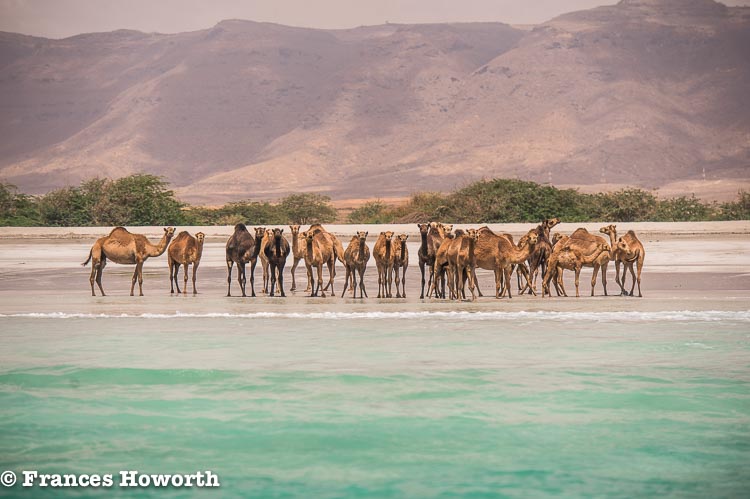 We have been on safari and we have driven Land Rovers over deserts and in our time we have seen camels in many places around the world.
We have been on safari and we have driven Land Rovers over deserts and in our time we have seen camels in many places around the world.
It is however not often you see them on a boat trip while cruising on the Indian Ocean but we did in Oman
Dromedary camels are often known as “ships of the desert” It is a phrase that can be traced back to the time of Marco Polo.
Back when he needed them most they were the perfect desert pack animals, able to carry 300 pounds and to journey for up to two weeks without food or water.
Standing over 3 metres tall, Camels don’t have many choices of food items since they live in an environment in which few plants will grow; they have, however, evolved to the point where they can and often do eat and digest anything that grows in harsh, hot and dry climates.
Camels have three stomachs which allows them to partially digest their food and then regurgitate it to finish the chewing and digestion process. These vegetarians are truly unique in their ability to squeeze nutrients from the driest, most unappetising pieces of plant material imaginable.
Camels ingest enough water to keep from dehydrating and can go over 90 days without water.
When water is readily available, they may drink as much as 35 to 40 gallons at a sitting. They store fat in their hump which is used as energy whenever food is scarce. If camels are not able to get food or water for several months…their hump will become almost non-existent, but will rapidly “rebuild” after proper food and water has been ingested.
